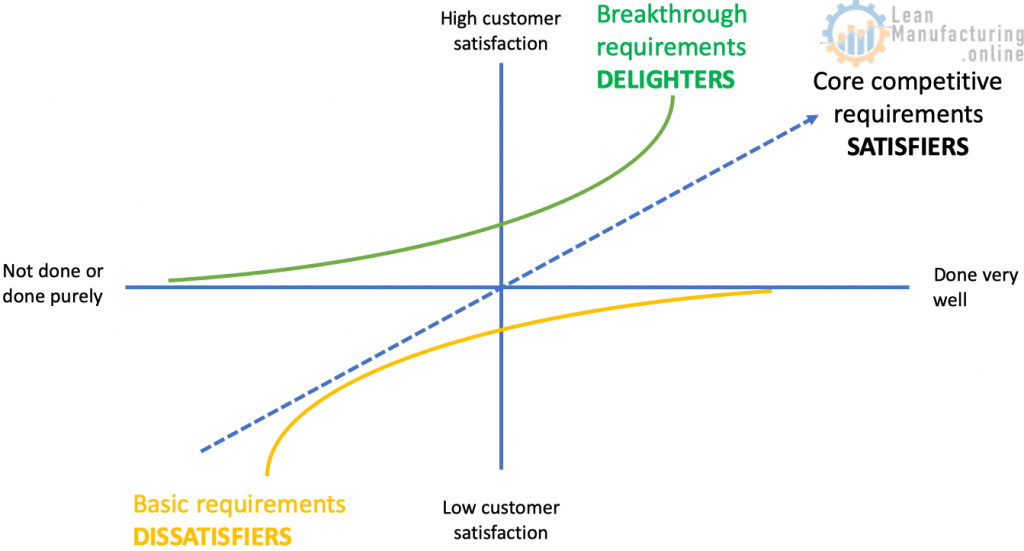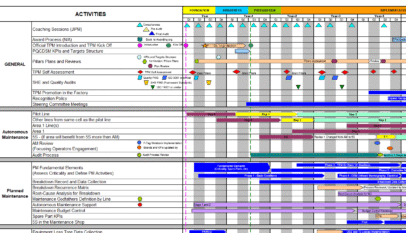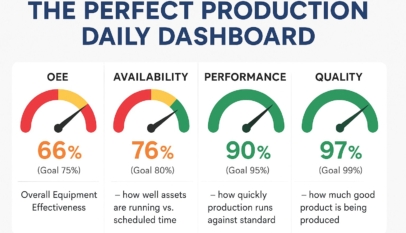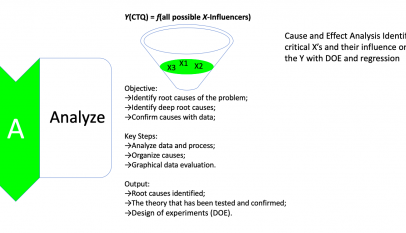A Holistic Approach to Customer Satisfaction and Quality Management
The Kano model, developed by Dr. Noriaki Kano in the 1980s, is a valuable framework for understanding customer satisfaction and quality management. Rooted in the principles of Genchi Genbutsu and influenced by Herzberg’s 2-Dimensional Theory, the Kano method helps businesses identify and address the factors that influence customer satisfaction. By focusing on positive and negative quality elements and understanding the concept of latent requirements, companies can better meet the evolving needs of their customers.
The Kano Method: Experiencing the Product as a Consumer
At the core of the Kano method is the belief that to truly understand customer needs and improve a product or service, one must go to Genba, where the product is being used or the service is being delivered. Dr. Kano emphasized the importance of experiencing the product or service as a consumer rather than relying on surveys or statistically significant sample sizes. This principle of Genchi Genbutsu encourages firsthand experience, which can lead to more meaningful insights and improvements (Source: Quality Methods International).
Customer needs can be divided into three categories:
- Dissatisfiers: expected feature or characteristic of a product or service;
- Satisfiers: Standard characteristics that increase or decrease satisfaction by their degree;
- Delighters: Unexpected features that impress and ‘delight’ customers.

Focus on controlling Dissatisfiers and Satisfiers first, then drive the market through Delighters.
Herzberg’s Influence: Motivators and Hygiene Factors
Dr. Kano’s work was heavily influenced by Frederick Herzberg’s 2-Dimensional Theory, which proposes that two distinct factors influence human motivation for work. Motivators inspire people to work, while hygiene factors can demotivate individuals if not properly managed. Building on this theory, Kano introduced the concepts of positive quality elements (M-Property) that satisfy consumers and harmful quality elements (H-Property) that dissatisfy consumers (Source: KanoModel.com).
Quality: A Matter of Perception
Dr. Kano argued that quality has a lifecycle and must evolve as users redefine their expectations. He posited that “quality is user perception,” meaning that a product’s success depends on its engineering and customers’ perception. For instance, while Toyota may have better-built vehicles, customers perceive Tesla as higher quality, demonstrating the importance of consumer perception in determining a product’s value (Source: The Tesla Phenomenon).
Latent Requirements and Unarticulated Needs
Dr. Kano also highlighted the significance of “latent requirements” or unarticulated needs – the aspects of a product or service that customers may not explicitly communicate. By identifying and addressing these needs, businesses can enhance customer satisfaction and stay ahead of the competition (Source: CustomerThink).
Quality Definitions from Kaoru Ishikawa and Joseph M. Juran
Complementary to Dr. Kano’s work, other quality management experts have defined quality. Kaoru Ishikawa (1915-1989) defined quality as “consumer satisfaction,” emphasizing the importance of meeting customer expectations. Joseph M. Juran (1904-2008) proposed that quality is “fitness for use,” suggesting that a product’s value depends on its ability to meet its intended purpose (Source: ASQ).
Conclusion
The Kano method offers a comprehensive approach to understanding and managing customer satisfaction and quality. Businesses can better meet customer needs and foster long-term success by incorporating principles such as Genchi Genbutsu, Herzberg’s 2-Dimensional Theory, and recognizing latent requirements.
Sources:
- Quality Methods International. “The Kano Model: Understanding Customer Needs.”
- KanoModel.com. “The Kano Model.”
- The Tesla Phenomenon. “Quality Perception: Toyota vs. Tesla.”
- CustomerThink. “Unarticulated Needs and the Kano Model.”
- ASQ. “Quality Gurus: Kaoru Ishikawa and Joseph M. Juran.”

















